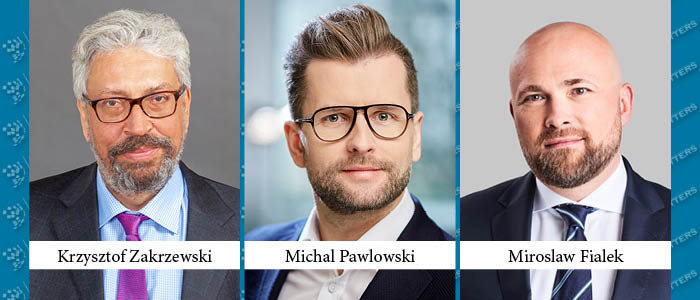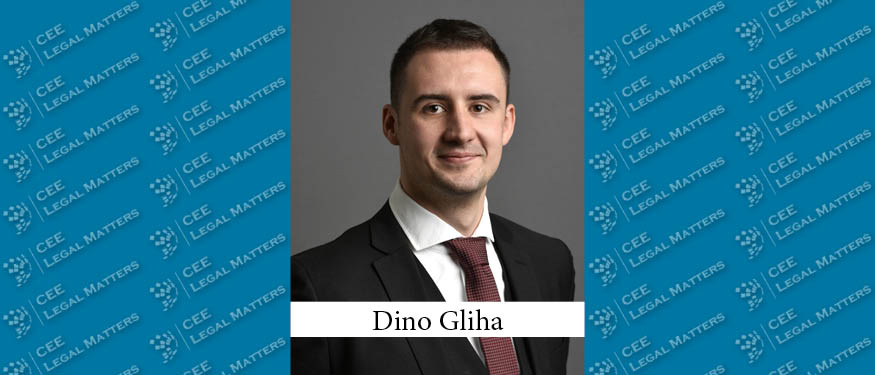Domanski Zakrzewski Palinka Managing Partner Krzysztof Zakrzewski, DWF Poland Managing Partner Michal Pawlowski, and MFW Fialek Managing Partner Miroslaw Fialek look at the current state of the Polish legal market and some of the challenges it faces despite increased volumes of work.
Looking at the Numbers
Fialek reports an uptick in activity for their law firm in 2022. “Throughout 2022, our law firm witnessed a remarkable surge in transactional activity, evidenced by a notable increase in the number of ongoing projects – exceeding 50 in total,” he says, highlighting an influx of international clientele interested in investments in Poland and nearby regions. Still, despite this success, Fialek acknowledges challenges in maintaining steady client growth. “Our primary challenge has been to consistently expand our client base within the boundaries of the Polish market,” he says.
Pawlowski also shares a positive outlook, noting an increase in the volume of work over the past year. “The volume increased and we expect to see another year of continued growth,” he notes. Pawlowski attributes this growth to investments in organic expansion and activity in renewable energy M&A. However, he acknowledges that challenges persist, including the macroeconomic situation and market trends.
But the volume of work alone might not paint the full picture. “Our volume of work is overall more or less the same but revenue growth is only 2-3%,” Zakrzewski reports. “Obviously, it varies across practice areas.” He highlights the turbulence in Poland’s economic and political situation, noting that disputes with the EU resulted in the withholding of European funds and a freeze in activity on capital markets. He also emphasizes the potential for Poland to attract international business in the future, depending on the results of the upcoming election in October.
Still a Very Interesting Place to Invest In
The lawyers agree that Poland, despite existing hurdles, is still quite appealing to investors. “Generally, it is still comparable, but we have to take into consideration the loss of our good reputation as a country – inflation, unstable political and economic situation, relations with the EU, etc.,” warns Zakrzewski. However, issues notwithstanding, Zakrzewski highlights Poland’s attractive features, particularly the availability of a well-educated, committed, and cost-effective workforce.
Fialek, on the other hand, adopts a more optimistic stance, stating, that “the allure of investing in a particular country is shaped by a multitude of factors, encompassing elements such as currency stability, governmental policies, business potential, geographical advantage, and more.” He acknowledges Poland’s challenges, including inflation and geopolitical tensions, but highlights the nation’s well-educated workforce, much like Zakrzewski, as well as competitive labor costs, and strategic geographical location as compelling reasons for investment. Also, he underlines the robustness of Poland’s economic infrastructure and its ability to weather regulatory complexity introduced by recent legal changes.
“Despite some challenges,” Pawlowski believes that “Poland is still a very interesting place to invest. That is largely driven by macroeconomic trends in Poland and relatively faster growth perspectives.” He points out that Poland’s membership in the European Union offers a regulatory framework “that is a safeguard for foreign investors that the laws shall remain stable and reliable.”
A Unique Trend
Speaking about the contest between law firms in Poland, Zakrzewski emphasizes that, “price competition on the Polish legal market is certainly the toughest in the region.” He points out that rates in Poland have been decreasing over the years, which is a unique trend compared to other countries. Zakrzewski attributes this phenomenon to the presence of numerous international law firms in the Polish market and the emergence of smaller, cost-effective firms formed by experienced lawyers.
Fialek chimes in, adding that price competition is “heavily contingent on several pivotal factors, including whether a firm is part of a network, its size, and the geographical location it operates in. This diversity has generated a pronounced range in pricing structures, giving rise to a multifaceted competitive scenario among law firms.” Ultimately, Fialek reports that firms compete “not solely on the basis of pricing” and clients “evaluate their choices based on more comprehensive criteria.”
This article was originally published in Issue 10.9 of the CEE Legal Matters Magazine. If you would like to receive a hard copy of the magazine, you can subscribe here.

















